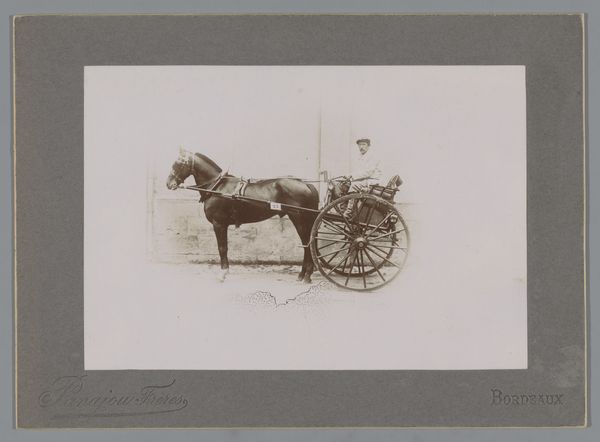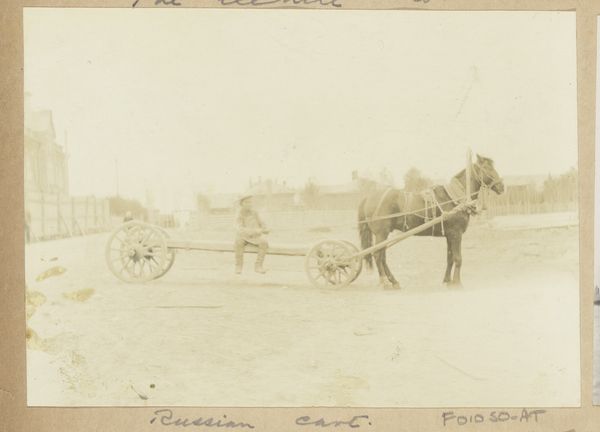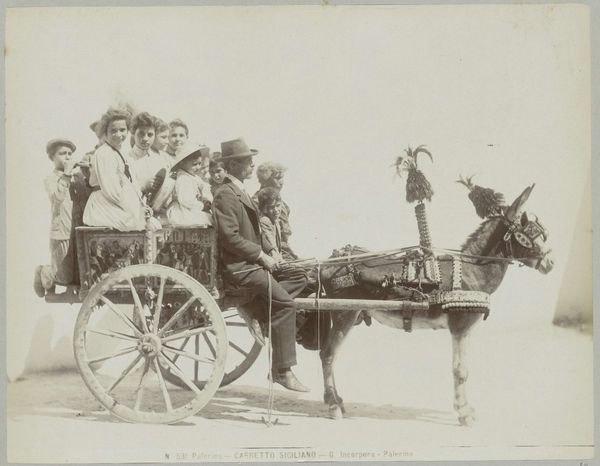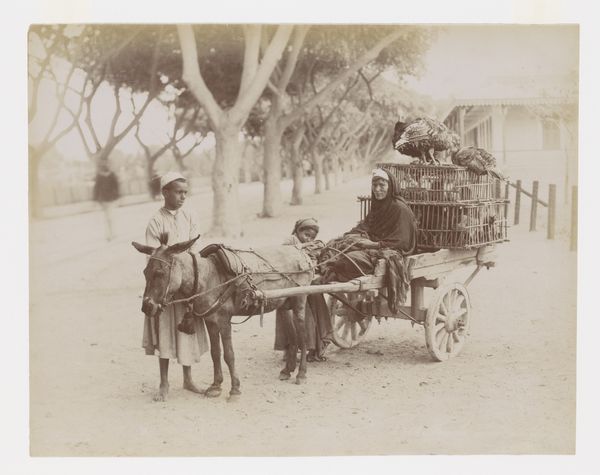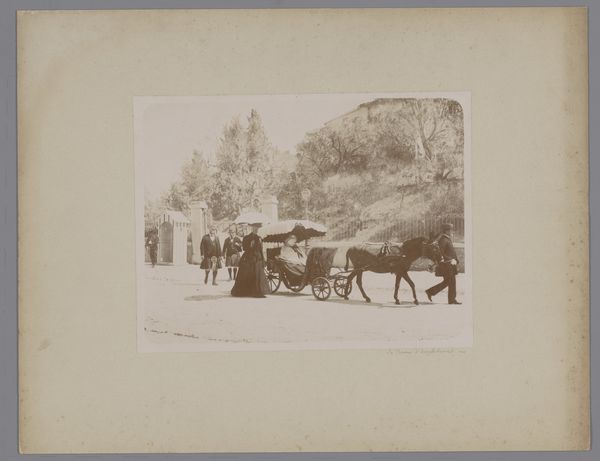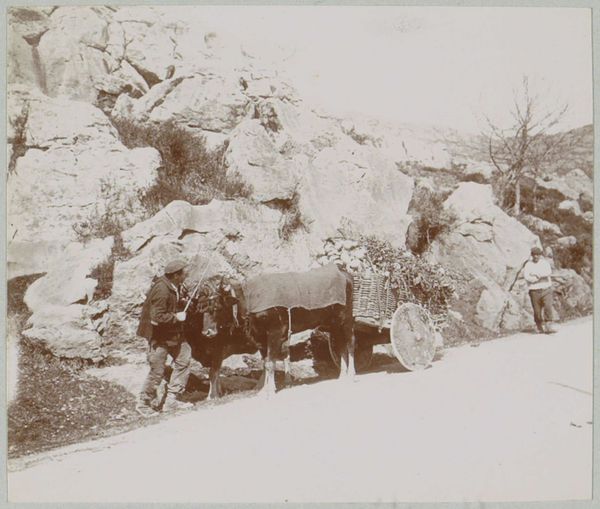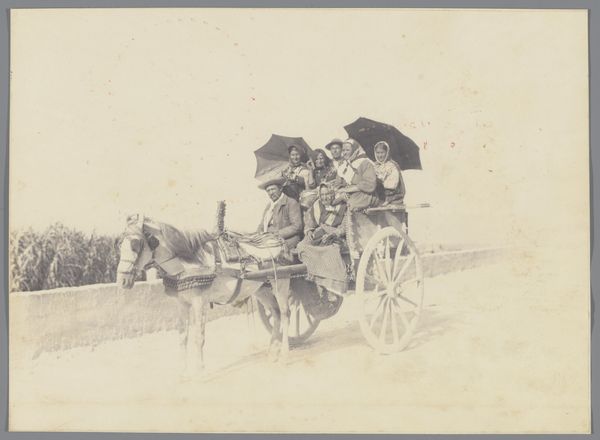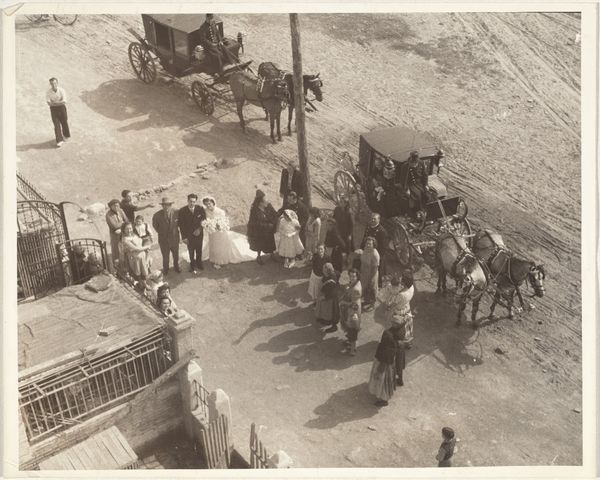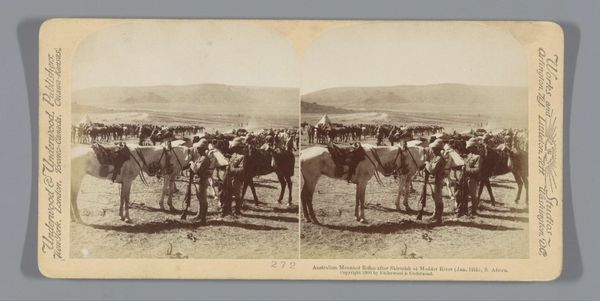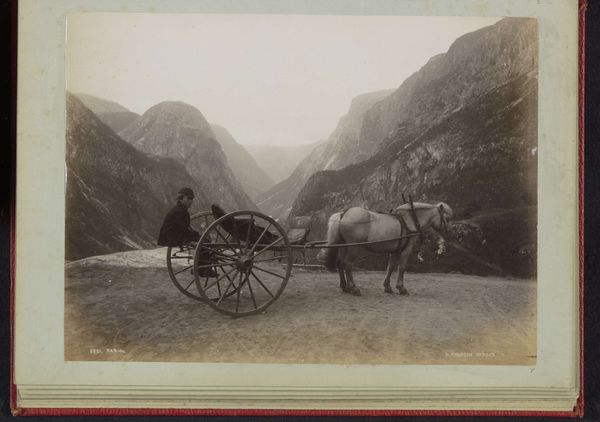
cardboard, albumen-print, paper
#
cardboard
#
albumen-print
#
aged paper
#
16_19th-century
#
reduced colour palette
#
muted colour palette
#
photo restoration
#
animal
#
light coloured
#
white palette
#
paper
#
old-timey
#
horse
#
19th century
#
italy
#
soft colour palette
#
watercolor
Copyright: Public Domain
This photograph of a Naples street scene was taken by Giorgio Sommer, probably in the late 19th century. It’s a relatively straightforward image, made using a large format camera and glass plate negative. But consider how Sommer has framed the shot. The horse and cart are positioned prominently in the foreground, almost like a sculptural monument. The texture of the wooden cart, the metal chains, the horse’s dark coat, and the rough stones it carries, all contrast with the smooth, light-colored buildings in the background. Look closer and you will see how the driver is positioned on top of the load, turning what is essentially a laboring picture into something of a tableau vivant. The image invites us to consider the way labor is presented, both romanticized and exposed, reflecting the social and economic realities of Naples at the time. It reminds us that every photograph, however simple, is carefully crafted to convey a particular meaning.
Comments
stadelmuseum about 2 years ago
⋮
Naples held great appeal for tourists not only because of its charming coastal scenery and awe-inspiring Mount Vesuvius, but also thanks to its customs and traditions. Particularly from the 1880s onwards, Italian-based photographers increasingly marketed studies of human beings that shaped and continually fuelled the cliché of the poor but carefree population of Southern Italy. With his outsider’s perspective on the Italian culture, the native Frankfurter Giorgio Sommer contributed to shaping the visual habits of tourists. In a series entitled Costumi (Customs), he captured purportedly characteristic everyday scenes. By populating his scenes with merchants and craftspersons—in some cases hired to pose for the shot—he conveyed the image of a traditional, pre-industrial society.
Join the conversation
Join millions of artists and users on Artera today and experience the ultimate creative platform.


